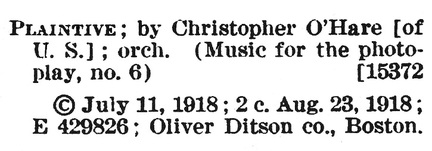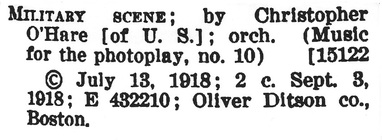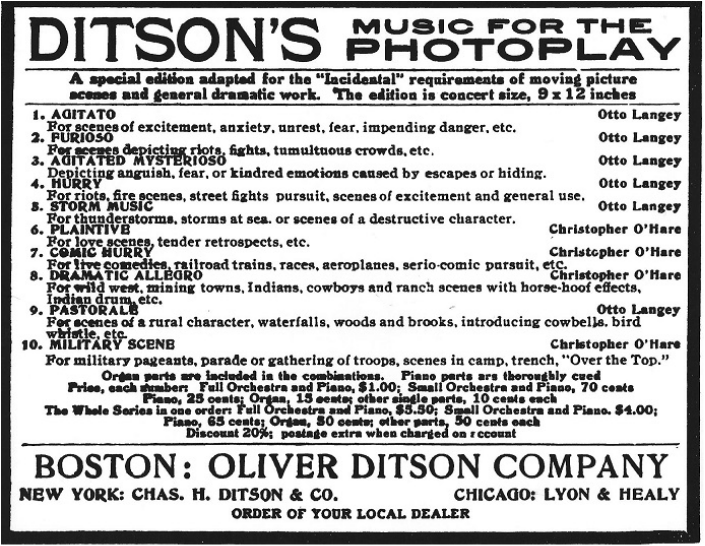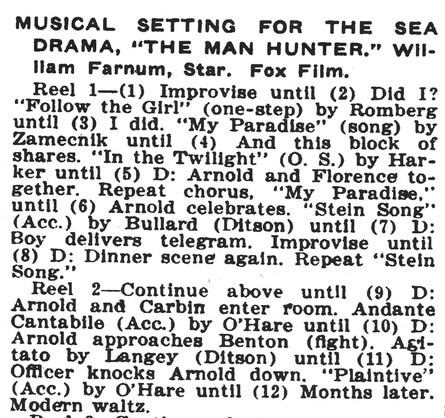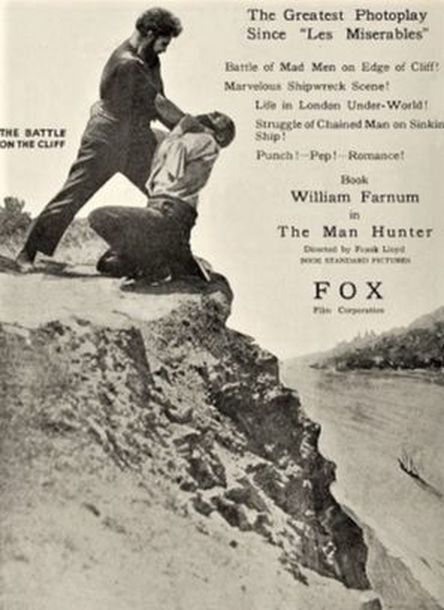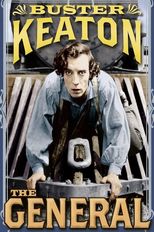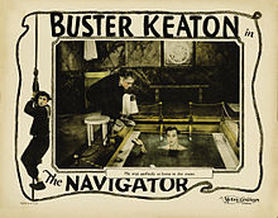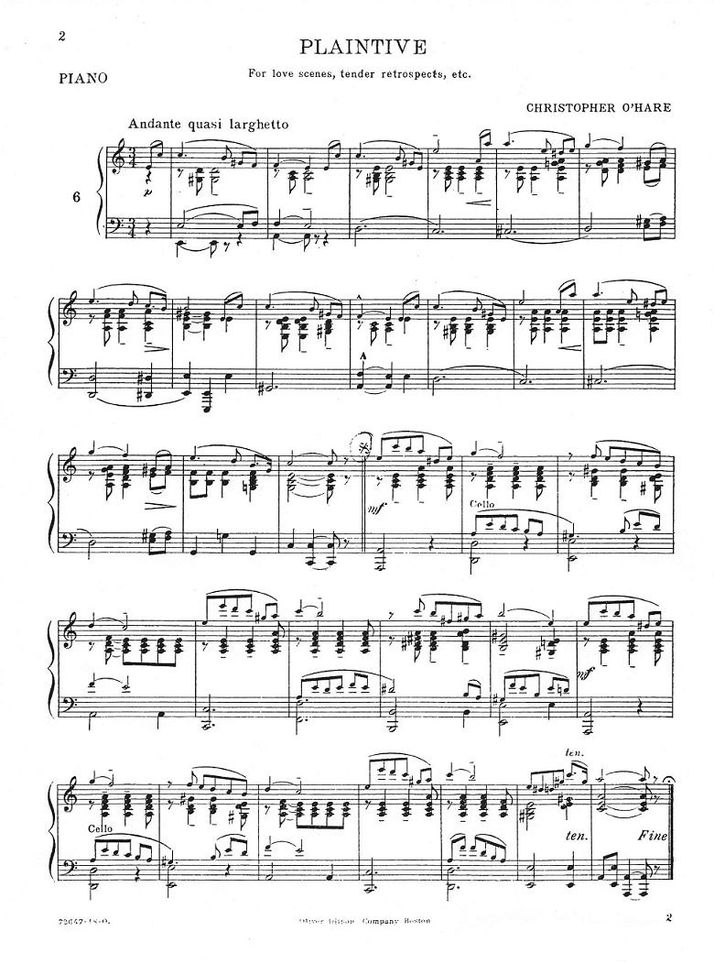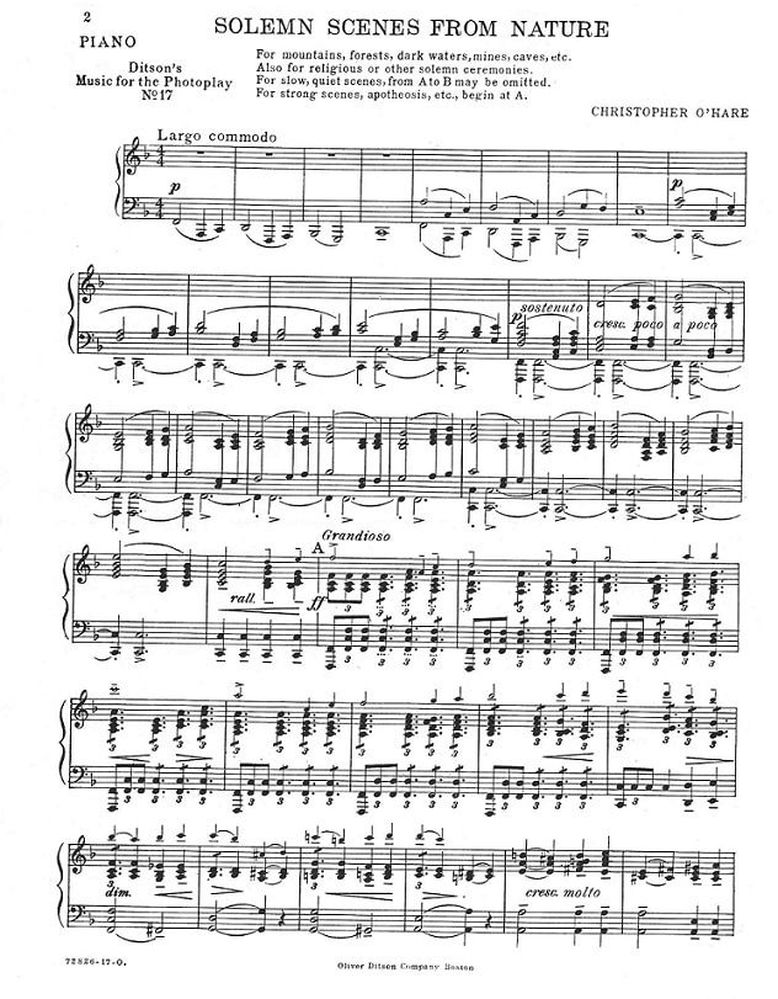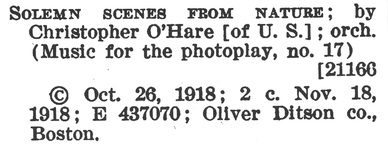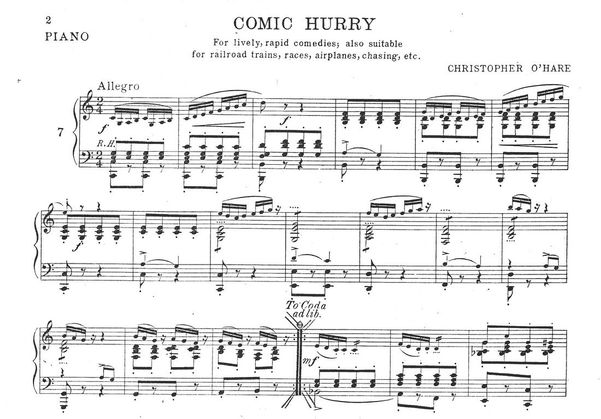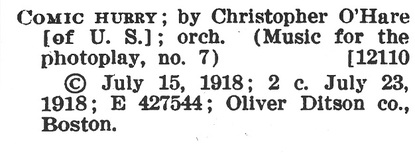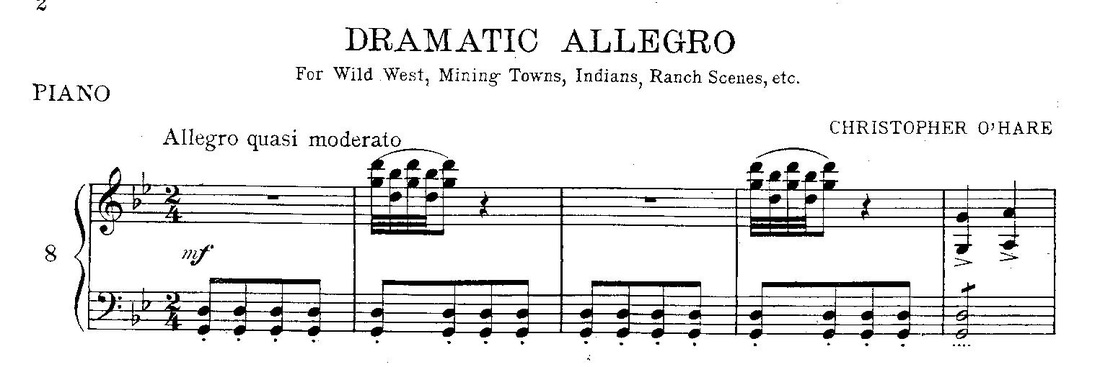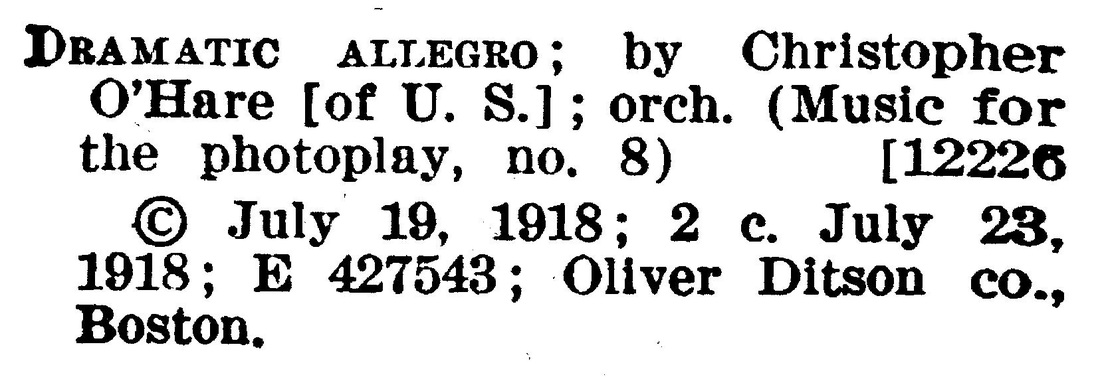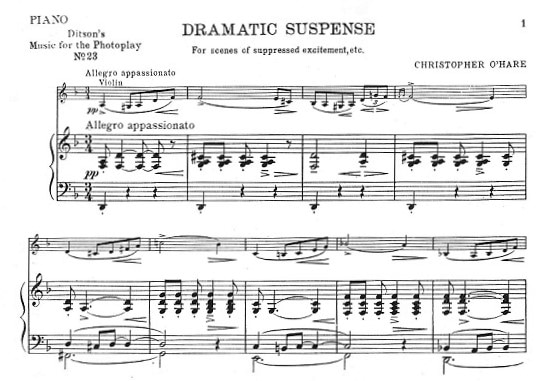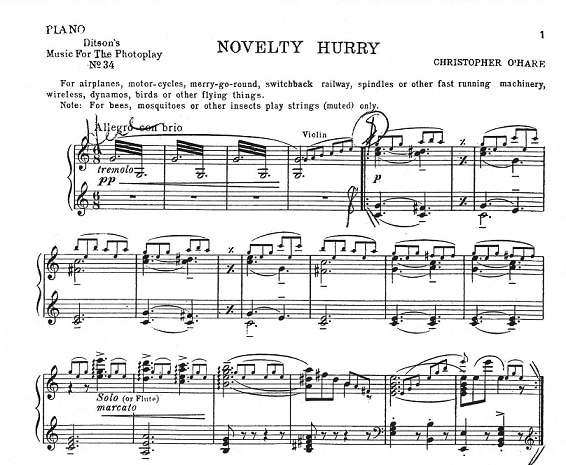In mid-1918, O'Hare turned his talents to silent film accompaniment. Since scene types varied greatly, silent film music was commonly titled by tempo, mood, or scene type to aid the music director or performer charged with selecting the most suitable piece for a scene.
During a 1921 interview, son William Crockett O'Hare, new manager of Des Moines' Rialto Theater, commented on silent film music requirements:
There are but two languages that people of every nation can understand. They are music and pictures. In playing a William Tell overture, the music depicts a storm and everyone knows that it is a storm, or the music tells of dawn and every one feels that it is dawn.
But, if the orchestra is telling one story and the picture is telling another, then there are two stories that the audience is trying to follow. For a picture to be successfully played, the people must not hear the music. They must feel the music, it must play up the picture. But as soon as you hear the music, no matter how good it is, the music is wrong because it is telling something different than the picture. The picture and music must be in harmony. They must make a chord. When you are conscious, then there is discord. The music is telling something other than the picture.
I have seen hundreds of good pictures spoiled by good music. The picture was good. The music was good. But they were calling for divided attention. It is like Barnum's three-ring circus. Before that, there has only been one-ring circuses. When Barnum introduced a three-ring circus, people thought it was great because they were getting more for their money. Of course they weren't. They could only watch one ring at a time anyway. But everyone was comfortably fooled for as Barnum said, 'People love to be fooled.'
Since William Crockett reportedly had started out in the film industry in 1910 doing odd jobs at Vitagraph as a teenager, "learning the business from the bottom up," I can't say to what degree these were his own ideas, those of people with whom he worked, or those shared with him by his composer father.
With William Christopher O'Hare's years of experience orchestrating theater tunes, with movie theaters attracting audiences away from live performances, and with two sons having entered the rapidly expanding movie theater business, O'Hare may have had more than one reason for tackling this genre. Interestingly, he published his first silent film music during his younger son Slater's December 1917 to December 1918 military deployment to the European Front. O'Hare's first published film pieces--the haunting Plaintive and the WWI-appropriate Military Scene--were registered for copyright only a few days before Slater was wounded at the Battle of Chateau-Thierry in mid-July. Copies of these two pieces didn't reach the Library of Congress until six to seven weeks later, a period when Slater's survival remained uncertain.
O'Hare composed his film music for Oliver Ditson Company, a firm for which he also composed liturgical music and orchestral works marketed to school orchestras..
An Early Review
In 1918, Musical America introduced the first series of Oliver Ditson's silent film music with remarks about the growing use of theater orchestras and the effect that change had on music publishers:
The improvement in the orchestras in our better class moving-picture theaters all over the country has called for considerable care in the selection of the music performed. Managers of these theaters have agreed that the music is a very important factor in the success of their enterprise and the best proof that they believe this is the fact that fine orchestras are employed at such houses as the Rialto, Strand and Rivoli in New York City.
When the moving picture boom began a few years ago and it was suggested to the music publishers that special music for the pictures would be necessary, it was met with skepticism by them. For they believed that the music could be patched together where orchestras were engaged, and where pianists played alone (and at that time this was the case in the great majority of movie theaters), the music could be improvised. As excellent orchestras came to be organized for pictures, the publishers awoke to the future of the moving picture theater and began to prepare orchestral music for them.
A good deal of music has been written, some of it of worth, much of it unimportant; both kinds have been used in the film theaters. The Oliver Ditson Company has recently made a fine addition to its catalog of orchestral music by issuing a series of compositions under the title "Music for the Photoplay." The set consists of ten numbers, four by Christopher O'Hare and six by Otto Langey.
These are brief compositions clearly and legitimately written, descriptive and suggestive in character. Both musicians have accomplished their task with credit and their orchestration is nicely and practically carried out.
Early Use of O'Hare's Film Pieces and Later Concert Performance
Film makers often recommended appropriate selections. One example appears in the partial cue sheet below, suggesting O'Hare's Andante Cantabile and Plaintive during the second reel of The Man Hunter.
|
A 1927 cue sheet for The General also includes O'Hare's Military Scene.
However, because theater music directors or musicians commonly selected from their theater's collection, few records have survived to document what music they selected for any particular film. Consequently, it's rarely possible to know when and precisely how anyone used O'Hare's or other silent film composers' work. |
|
Although published in Ditson's Music for Photoplay series and generally used in short segments that would fit scene length, O'Hare's film music could stand alone as an overture before the film or even as a concert selection in a non-theater setting. The concert program excerpt on the right supports this point. Similarly, Mont Alto Motion Picture orchestra selects full film pieces to play as overtures before using excerpts during its film accompaniment.
|
O'Hare's Film Music at Silent Film Festivals and on CD/DVD
|
Mont Alto Motion Picture Orchestra has drawn from several of O'Hare's silent film pieces when accompanying The Wishing Ring (1914); Suds (1920), starring Mary Pickford; The Navigator (1924) and Spite Marriage (1929), starring Buster Keaton; and The Battle of the Sexes (1928), a D.W. Griffith film.
Director Rodney Sauer has kindly provided the ensemble's recordings of O'Hare's Solemn Scenes from Nature, used in Mont Alto's score for Buster Keaton's The Navigator, and of O'Hare's orchestration of Harry Auracher's Persian Princess, used in Why Change Your Wife? score. Hear the latter by clicking here and scrolling to the 1912 section. |
Mont Alto's score for The Navigator includes O'Hare's Sea Song, Solemn Scenes from Nature, and Hurry
|
All but the two Keaton films listed above are available on DVD with music by Mont Alto. See Mont Alto's website. For related information, select the Photoplay Music option from the Mont Alto site.
Sample Film Music
The first three samples below the opening of the piano part of my three favorite Ditson film pieces, with some instrument parts cued in. In cases of solo pianist or organists or very small theater orchestras, the pianist could fill in the necessary parts. Further down the page, three additional recordings appear with brief passages from the corresponding music.
O'Hare music in the Ditson series includes piano, organ, first and second violin, viola, cello, bass, flute, first and second clarinet, oboe, bassoon, first and second cornet, horns, trombone, and various percussion (small drum, tympani, bells, triangle, etc.)
O'Hare music in the Ditson series includes piano, organ, first and second violin, viola, cello, bass, flute, first and second clarinet, oboe, bassoon, first and second cornet, horns, trombone, and various percussion (small drum, tympani, bells, triangle, etc.)
|
O'Hare's piano roll arrangement of Comic Hurry
|
Famous Players Orchestra's recording of Comic Hurry as used to accompany a scene for Buster Keaton's The Goat; posted to Youtube by the Famous Players Orchestra, a Los Angeles-based non-profit silent film orchestra
|
Background graphic, top of page: Cover closeup, Ditson's Music for Photoplay
